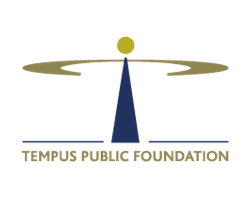2023-08-30
The official language of Hungary is complex and unique, it is among the 24 official languages of the European Union. Despite the country’s location in central Europe, its dialect is nothing like those spoken in its neighboring nations. It is a member of the Finno-Ugric language family and, it has been influenced by the languages of many nations throughout history, none of the neighbouring languages of Central Europe actually resembles Hungarian. Let’s check what makes the Hungarian language so special!
Anyone learning Hungarian will be keen to tell you that it’s one of the most challenging languages to take up. While opinion varies, everyone agrees it’s up there in the top 10 thanks to its 26 cases and numerous complex rules. In Hungarian Hungary’s language is called “magyar”, which can also be used to refer to the Hungarian people. It’s spoken by about 10 million people in Hungary, but there are major populations of Hungarian speakers across the border as well (cc. 5 million people)
One of the most striking differences between Hungarian and other European languages is that when introducing yourself in Hungary, your given name is always stated after your surname. For example, Sára Kovács would be introduced as Kovács Sára. This can catch some visitors; however, only the given name is used when speaking to or about someone.
Hungarian is written in a Latin alphabet but has 44 letters in total, which might seem a bit excessive compared to the 26 letters in English. However, once you have managed to learn the correct pronunciation for each letter, you are set for life. Hungarian pronunciation mostly reflects writing and vice versa.
There are quite a few composite consonants, meaning that a combination of two or three letters is used to indicate specific sounds. Confused yet? Take, for example, “dzs”, a letter in the Hungarian alphabet pronounced as “j”, or “sz” which equates to “s”.
The five vowels of the English language pale in comparison to Hungarian’s total of 14. As well as the basic “a, e, i, o, u” vowels, the Hungarian language also includes a further 9 variations on these: á, é, í, ó, ö, ő, ú, ü, ű – some of which are not supported by many fonts, a bother to Hungarian graphic designers looking for pretty letters. The pronunciation of each is slightly different and can change the meaning of a word completely.
“Magyar” is an agglutinative language, which means that various grammatical components – such as affixes and stems – can be added to a word to increase its length (and change its meaning). Thanks to this, words of more than 100 letters have been created in the past, although the longer the word, the more it can tend to lose its meaning. Still, nowadays some words can be more than 20 letters long.
Moreover, there is a rule for “vowel harmony”: suffixes have variants with different vowels in them (for example: in the house – “házban”, in the pool – “medencében”), and the variant you use depends on the vowels in the word you are adding the suffix. To increase your troubles, more than one suffix can be added to the same base at the same time to express various grammatical functions in one go. This is a major pain for most Hungarian language learners, as this way each Hungarian word has a tremendous number of forms, instead of just one singular and one plural.
When putting a sentence together in Hungarian, there are a number of options in terms of word order. While the word order is flexible, it’s not totally free – there are still rules about how words need to be arranged. This depends on the emphasis of the sentence.
Maybe you are among those who could practice or learn the language in your diaspora community or family, other scholarship holders have the opportunity to study “magyar” in Hungary.
“At the time of my arrival in Hungary as a student, I was already familiar with some of the traditions and the usual ones, but unfortunately, I could not speak Hungarian at all. I always thought it was a very beautiful language and I was in love with the sound of it and I couldn’t wait to learn it too. I remember very well when I got on the plane on the way to Budapest, my thought was “On the way back I will definitely speak Hungarian with the employees of the airline company” and this thought did not leave me.
My teacher at the language school was very professional and strict at the right moments. This helped me to easily learn the language at the intermediate level in a year then successfully pass all the exams and enter the university and study in Hungarian. I did not experience too many difficulties because I had a goal and I confidently went to meet it. I can’t say that Hungarian is an easy language, on the contrary, I still have problems with grammar, but I feel very confident anywhere when I talk to people, and I know that they will understand me!
But the most important thing in my opinion is to set a goal for yourself and go for it! Then even the most incredible and distant dreams will come true!” (Vlada Volkova)
“Although I had background knowledge of the Hungarian language from continuously hearing it during my upbringing, I didn’t fully grasp the beauty and complexity of it until attending intensive classes and speaking it daily, in the country itself. The first couple of weeks were very difficult, but once I got past the feeling of not knowing or understanding anything and began truly thinking like a Hungarian, my love for the language and culture grew tenfold.
I attended Balassi Institution’s university preparatory course, which I can not recommend enough. Not only did I have some of the highest quality teaching, but I truly found that the teachers wanted to see you flourish in as many ways as possible. If it wasn’t for this course and the energy invested by countless people, I would not have been able to reach my language goals as quickly as I have.
My advice is to study the grammar, use your mouth even when you might sound dumb, and think, speak, and breathe with your “Hungarian” brain!” (Tamas Kenneth Tottszer)










